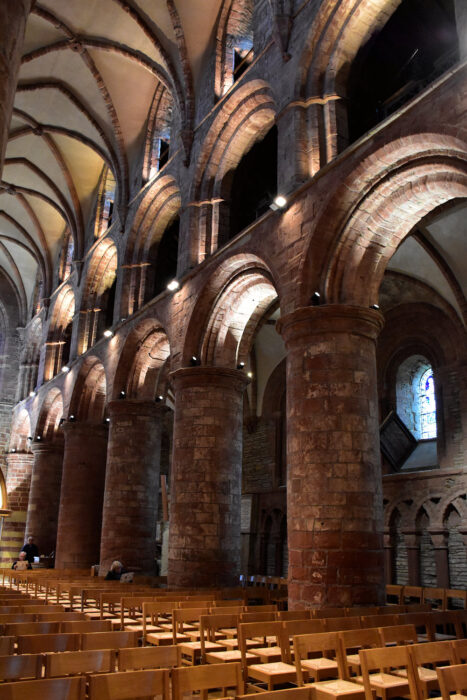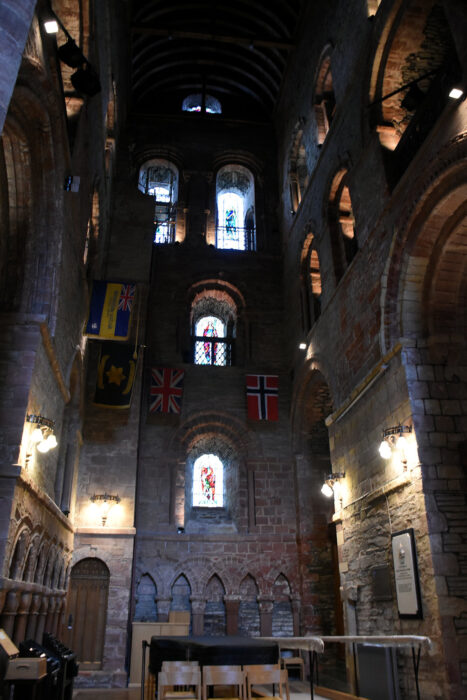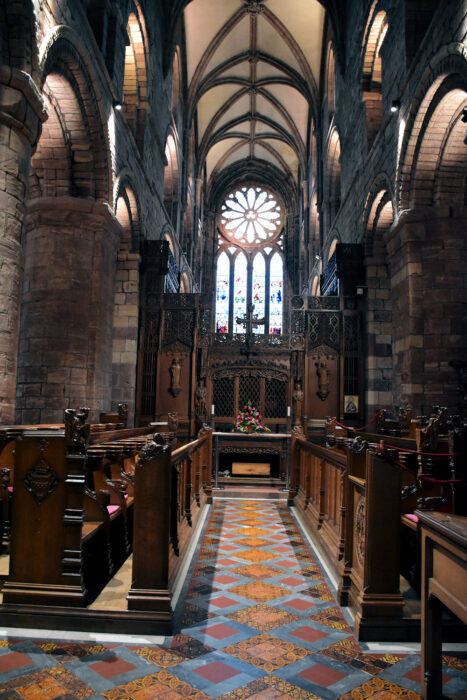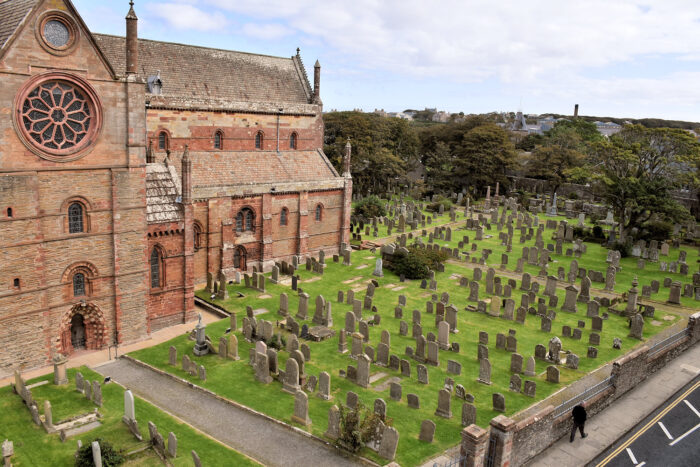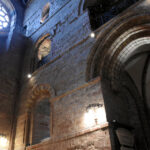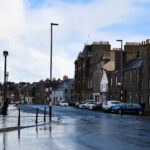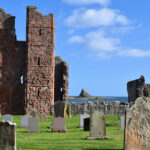As I was tired after much travelling the day before, this was to be a quiet day looking around Kirkwall.
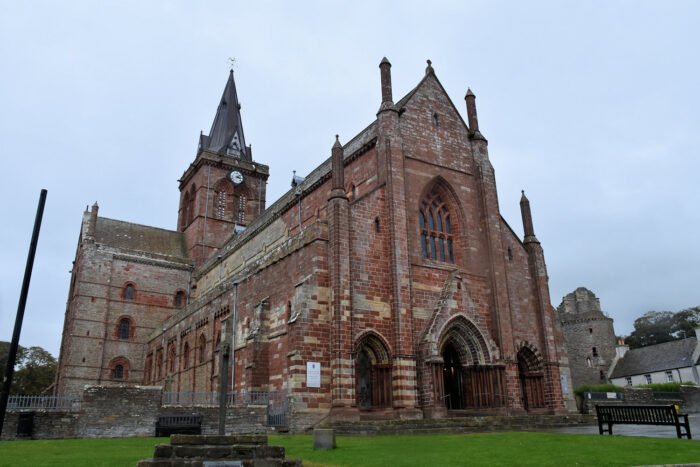
I went first to St Magnus Cathedral, to fill in time until the other things open.
Magnus pops up a lot, so I’ll just put his story in here.
According to the Orkneyinga Saga, Magnus had a reputation for piety and gentleness, which the Norwegians viewed as cowardice. He refused to fight in a Viking raid in Anglesey, Wales, because of his religious convictions, and instead stayed on board the ship during the Battle of Menai Straits, singing psalms. [He] returned to Orkney in 1105 and disputed the succession with his cousin Haakon. Having failed to reach an agreement, he sought help from King Eystein I of Norway, who granted him the earldom of Orkney and he ruled jointly and amicably with Haakon until 1114. Eventually however, the followers of the two earls fell out, and the sides met at the Thing (assembly) on the Orkney mainland, ready to do battle. Peace was negotiated and the Earls arranged to meet each other on the island of Egilsay at Easter, each bringing only two ships. Magnus arrived with his two ships, but then Haakon treacherously turned up with eight ships.
Magnus took refuge in the island’s church overnight, but the following day he was captured and offered to go into exile or prison, but an assembly of chieftains, tired of joint rule, insisted that one earl must die. Haakon’s standard bearer, Ofeigr, refused to execute Magnus, and an angry Haakon made his cook Lifolf kill Magnus by striking him on the head with an axe. It was said that Magnus first prayed for the souls of his executioners. . . . [Later] Magnus’s nephew, Rognvald Kali Kolsson, laid claim to the Earldom of Orkney, and was advised by his father Kol to promise the islanders to “build a stone minster at Kirkwall” in memory of his uncle, the Holy Earl, and this became St Magnus Cathedral, Kirkwall.
Wikipedia
The cathedral was started in 1137 and has been enlarged and changed over the centuries. It is… interesting. There are large, old headstones along the walls, pillars that lean because the building has moved, saints buried in pillars, and tombs and rings and carvings and all sorts of stuff. Also, the lighting is interesting.

Across the road is the Bishop’s Palace. It was built about the same time as the cathedral but was enlarged in 1540. An extra floor was added to the main buildings and the tower constructed.
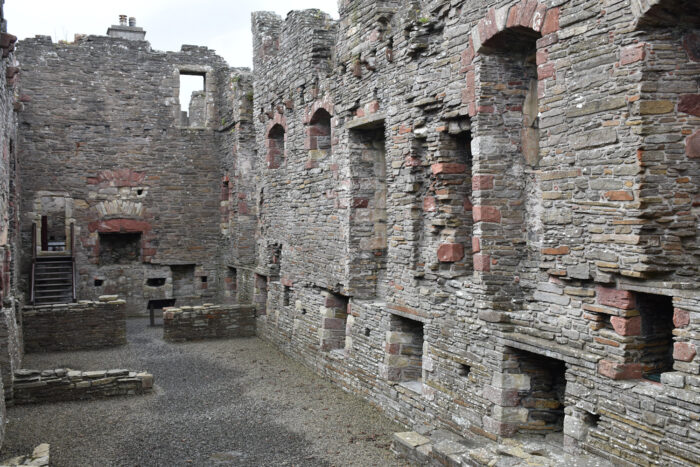
You can make out the different floors. At the bottom, with the walls and lower row of the squares, are the cellars and similar. Then the large openings (windows, fireplaces etc) of the main floor, including the great all. You can just see part of the upper floor, and there’s a doorway or window for it in the end wall.

The tower has many stairs. Many, narrow, spiralling stairs.
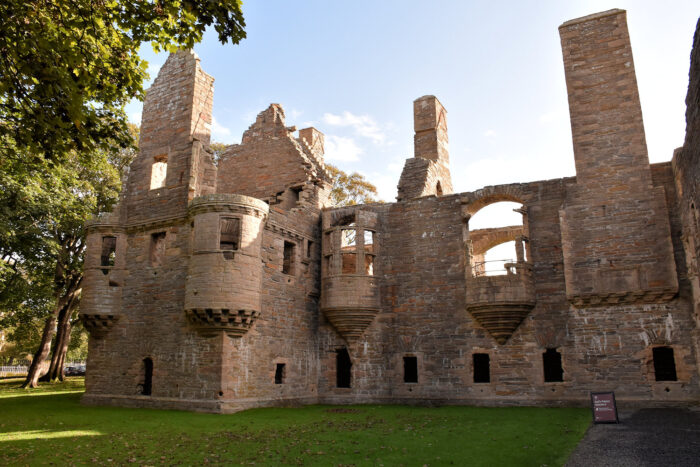
Across the road is the Earl’s Palace, built for Patrick Stewart about 1601-6. You might remember him from Scalloway. The panel outside the building says: ‘Black Patie’ had a reputation for cruelty and violence, and a taste for luxury he could not afford. Before his palace was completed, he was ‘drownit in debt’. Nor did he have long to enjoy it — in 1607 a royal decree required him to hand it over to the bishop (though he did not do so until 1610).
After 1609, Earl Patrick spent his days as a prisoner in Edinburgh and Dumbarton. His ‘monyfauld wrongs’ (as his cousin the king put it) included theft of lands and funds, oppression of local people, kidnapping, torture and murder. He was indicted for treason in 1610, and ultimately beheaded in 1615.
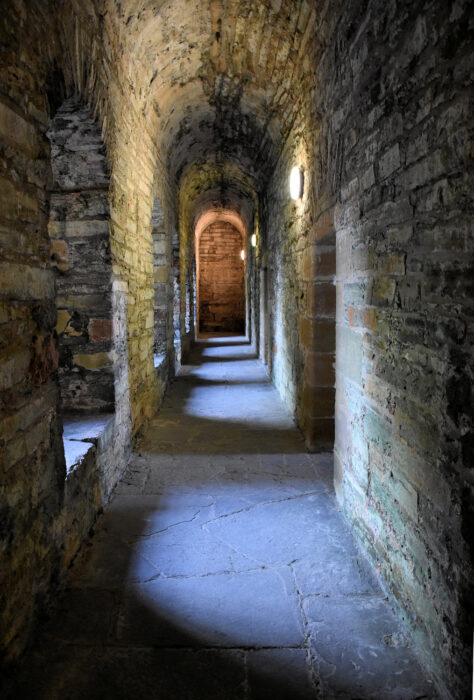
Lower level with storage rooms, cellars and kitchen
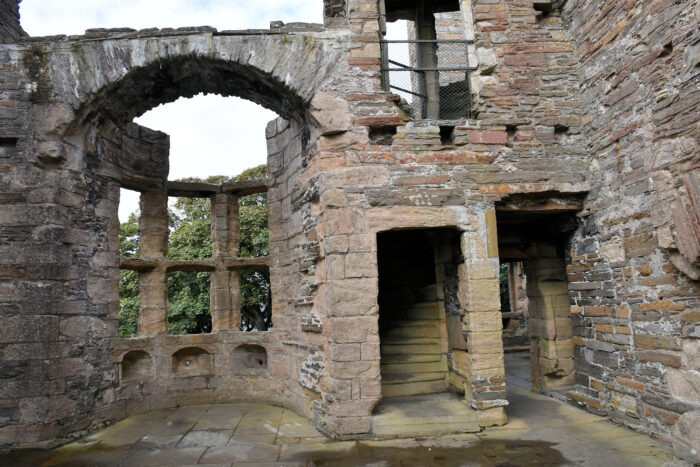
Stewart’s outer chamber. The inner chamber is through the door to the right and there are stairs. More narrow, spiralling stairs. I’ve decided men built them to keep women away.
After looking through these buildings, I had an afternoon to fill in so I… took a bus out to another town and walked up a hill.
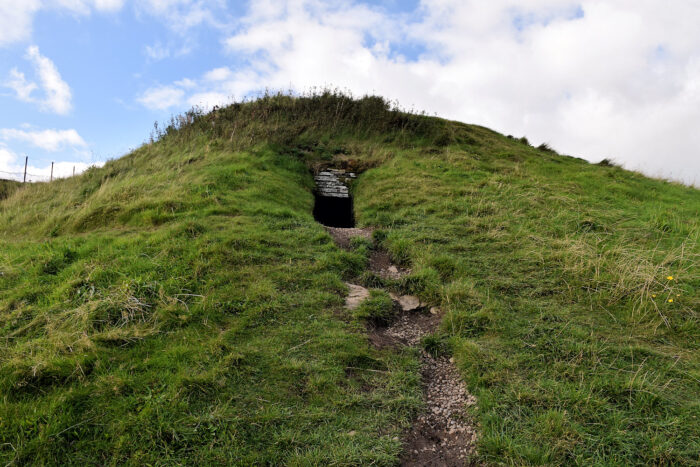
Cuween Hill Chambered Cairn, 5000 year old Neolithic tomb.
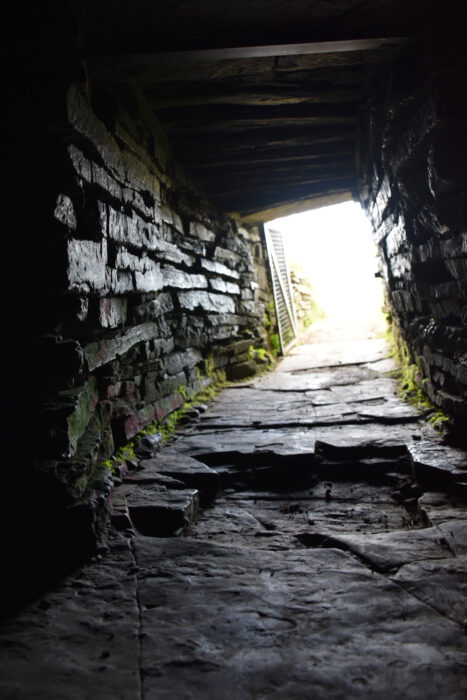
Accessed through a long, low, narrow passage. It doesn’t look narrow there but it was definitely a crawl job.

At the end of the passage is a central chamber, with four small cells opening off it. Possibly bodies were left in the central chamber and then the bones moved into the side cells.
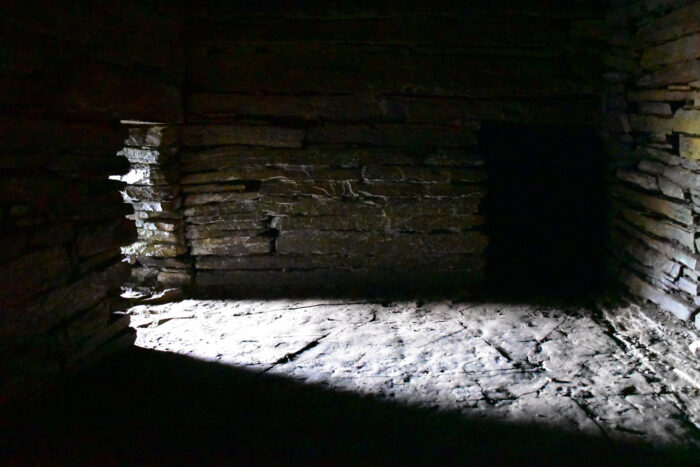
Exploration at the tomb in 1901 found:
* Remains of at least eight humans – five skulls on the floor of the chamber, one at the entrance and two in side cells
* The skulls of 24 dogs on the chamber floor
The dog remains suggest the local tribe or family perhaps had a dog as their symbol or totem, or there may have been a belief in an afterlife for animals.
Historic Environment Scotland
